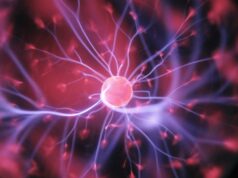 The International Neuromodulation Society (INS) will hold its 14th World Congress from May 25–30, 2019 in Sydney, Australia. The multidisciplinary meeting highlights top international research in neuromodulation therapies. Researchers from 22 countries will present plenary lectures and nearly 400 abstracts during the three-and-a-half-day scientific programme. Attendees include healthcare practitioners, biomedical engineers, scientists, and members of industry.
The International Neuromodulation Society (INS) will hold its 14th World Congress from May 25–30, 2019 in Sydney, Australia. The multidisciplinary meeting highlights top international research in neuromodulation therapies. Researchers from 22 countries will present plenary lectures and nearly 400 abstracts during the three-and-a-half-day scientific programme. Attendees include healthcare practitioners, biomedical engineers, scientists, and members of industry.
The theme, “Neuromodulation: Leading a Global Medical Revolution,” reflects the transformative nature of neuromodulation therapies to reduce symptoms and restore function in chronic conditions, such as pain, incontinence and movement disorders such as Parkinson’s disease. New lines of inquiry will be presented about the potential of neurostimulation therapies, also known as bioelectronic medicine or electroceuticals, for aiding stroke recovery, heart failure, depression, paralysis, cognitive or memory issues, addiction, obesity, and anorexia.
Australia has a long history of investment in neuromodulation innovation and research, starting with the development of cochlear implants in the 1980s. The tradition continues with clinical trials of leading-edge approaches for chronic pain and restoring movement to paralysed patients, which will be highlighted in the congress.
“At this landmark meeting, we will not only hear for the first time the results of large-scale, international, multicentre clinical trials proving the safety and effectiveness of new neurostimulation therapies and technologies, but also early groundbreaking work on novel approaches and applications of neuromodulation,” commented INS president Robert Levy. “Some of these newer devices are able to measure in real time the spinal cord or brain responses to stimulation to provide feedback control to optimise the effectiveness of the therapy. We imagine soon a time where we understand the brain and spinal cord signals reflecting chronic pain or abnormal movements and that these signals alone are used to provide constantly effective therapy.”
Before the main INS conference, three pre-conference workshops will include:
May 25, 2019: Noninvasive Brain Stimulation
May 26, 2019: Innovations in Neuromodulation
May 26, 2019: Hands-on Cadaver Course at Macquarie University
In addition, on 26 May, from 12–4:30pm, the INS and its regional chapter, the Neuromodulation Society of Australia and New Zealand, will offer a free programme, open to the public, in which patients and neuromodulation experts will discuss neuromodulation for urinary disorders, and movement disorders such as Parkinson’s disease, and chronic pain.
Two pioneers in the field of neuromodulation for chronic pain, Professor Michael Cousins of Australia and Richard North of the USA, will receive recognition at the INS 14th World Congress as Giants of Neuromodulation for their seminal research, educational leadership, and clinical practice of neuromodulation therapies.
Rising concern about long-term opioid use has driven increased interest in drug-free approaches like neurostimulation for pain management, as noted by the INS 14th World Congress Scientific Chair Marc Russo, a pain management physician in Newcastle, New South Wales.
“Chronic neuropathic pain has been one of the main applications of neuromodulation therapy since the 1980s,” he said. “Patients who benefit from neuromodulation treatment for chronic pain are often able to reduce or eliminate reliance on painkillers, thus reducing the risks of long-term opioid use, including tolerance, addiction, drug diversion and death due to overdose. After initial neuromodulation therapy costs of approximately US$15,000 to US$30,000, long-term savings have been confirmed in successive peer-reviewed studies. A foundational study in Neurosurgery in 2002, for instance, showed a break-even point at 2.5 years.”
In Australia, one of five people is estimated to have chronic pain. The Australian government warned in 2018 that the country may experience its own version of the opioid epidemic seen in the USA and elsewhere, and trends are being watched closely.
Developed in parallel with applications for chronic pain and difficult-to-treat urological problems, neuromodulation with deep brain stimulation has helped appropriately selected movement disorder patients manage motor symptoms since the 1990s. As neuromodulation technology has evolved in general over the years, so has the scope of conditions treated.
To underscore the inclusiveness, diversity and dynamism of the field, the congress includes networking and mentorship receptions for early career practitioners and international women in neuromodulation, as well as a special session on neuromodulation in Asia. The congress ends with a plenary session on the future of neuromodulation applications.













